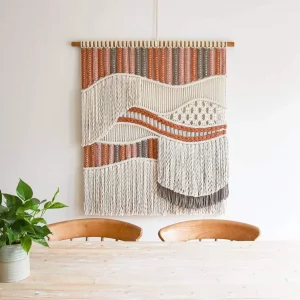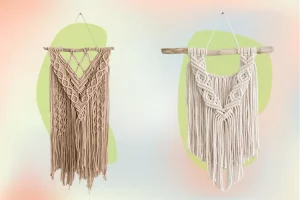What is Macrame?

Macrame is a really useful skill. It’s become something of a rediscovered art that has been thought lost or something that is consigned to the past as an old-fashioned past. However, it’s starting to see something of a resurgence in interest. When it’s done correctly, it can be a fantastic sight to see. There are many designs and uses for macrame, and it can be a deeply rewarding hobby; plus, it will really brighten up your home and give it an individual feel.
You can get a head start in the skill by buying a Macrame Kit. This will give you a complete introduction to the art and allow you to have a go at making a first basic pattern. Potholders for hanging baskets are one of the most interesting first projects, and you’ll find that as soon as you complete it, you’ll want to do more and try more complicated patterns.

The art of macrame is not born out of homemakers looking for something to do. Macrame comes from knotting and not knitting. Its origins dated back to the ancient Arab world. The word Macrame comes from the Arabic word macadamia, which literally translates as “ornamental fringe”.
The art entered European culture via the Moors in Spain, where it is still very commonly seen. The Court of Mary II saw its first appearance in England. It was also very popular in Genoa in Italy, which became a major exporter of the work.

In fact, it is surprising to find that the art was first started by sailors as a skill for everyone to try. A life on the ocean wave is not always exciting and to pass the time the sailors would use the down time to create complicated reef knots into geometric shapes. These ornamental pieces were then brought home as a memento of the journey or sold to boost the sailors income. For example, on long Atlantic journeys from the UK to the USA, sailors would take the fringes of bells and frayed them and then knot them. The also created hammocks from the ropes they had and weaved them to be stronger and better to look at
The weaving of the knots was made very popular with teens as they became friendship bracelets. It was a common sight to see girls weaving short bands of coloured thin wool together to make wrist bands for each other.

